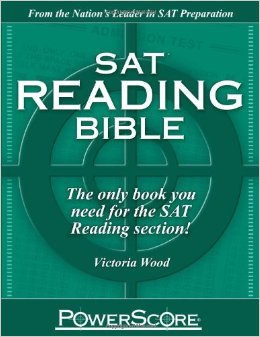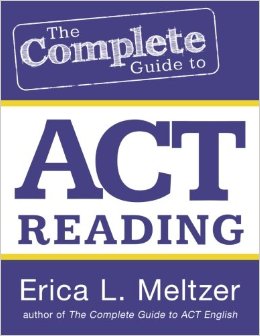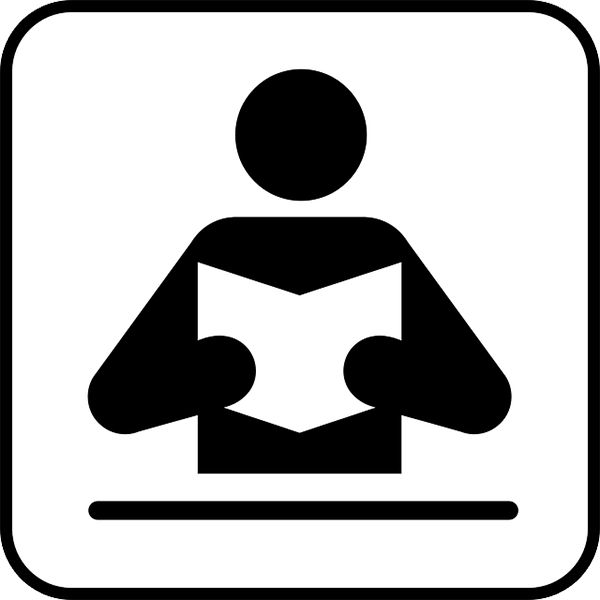To do well on the SAT Reading section, you'll need to prepare yourself to understand the material and pace yourself according to the structure of the test. In this article, I’ll take you through 10 quick tips for improving your Reading performance!
Full Review: PowerScore SAT Reading Bible by Victoria Wood
PowerScore is a test prep company with fingers in many pies, including the SAT prep pie (the most standardized of pies?). They have published a trilogy of SAT Prep books: SAT Math Bible, SAT Writing Bible, and SAT Reading Bible (which is what I'll be reviewing today). Like most prep books, the SAT Reading Bible has some positive and some negative aspects. Read on to figure out whether or not this book is appropriate for you and if you should add it into your own test prep.
Full Review: Erica Meltzer's Complete Guide to ACT Reading
Erica Meltzer’s test prep books have burst onto the test prep scene (if that wasn't a thing before, it is now) in the last few years, to great acclaim. She's published 2 books on the ACT: The Complete Guide to ACT English and The Complete Guide to ACT Reading (which is what I will be reviewing in this article). While Meltzer's books are high quality, they are not without their flaws, so read on to figure out whether or not this book is appropriate for you and if you should integrate it into your own ACT test prep. All shall be explained!
.
College Board's SAT Score Choice policy, started in 2009, means just what it sounds like. Well, you can't choose your scores - "I'll take a 2400, please!" - but you can choose which score reports you send to colleges. If you take the SAT more than once, then you can decide which scores get sent and which ones remain for your eyes only.
Since we're always thinking strategically when it comes to the SAT, this article will discuss not just how Score Choice works, but also how you can use it to your advantage. First, what exactly is SAT Score Choice?
The #1 Critical, Fundamental Strategy of SAT Reading and Writing
There are many different strategies out there for solving SAT Reading and Writing questions, but succeeding on this section really only requires mastery of one fundamental rule.
That rule is this: There’s only one 100% correct answer choice, and all the others can be eliminated without any ambiguity.
Read on to find out how this applies to your test-taking strategy and how you can use the rule to improve your scores.
The #1 Critical, Fundamental Strategy of ACT Reading
You only need to know one fundamental rule to do well on ACT Reading, and it’s not all that complicated. That rule is this: There’s only one correct answer choice for every question, and the other three answers can be eliminated based on definitively incorrect elements. In other words, the questions on the ACT Reading section are NOT subjective in any way!
In this article, I’ll go through the types of incorrect answers you’ll see on the ACT Reading section and how to ruthlessly eliminate them so you’re only left with one solid winning choice.
Analogy Questions in SAT Reading: Strategies and Tips
Though direct analogy questions were eliminated along with the old SAT Verbal Reasoning section in 2005, analogy questions remain in place in a more abstract form in the Critical Reading section.
In this article, I’ll show you what analogy questions look like, the best way to approach them, and some step by step examples for solving them with real questions from the SAT!
If you’re aiming for a top score on the ACT Reading section, you probably want to know what the hardest questions look like so you’re prepared for everything the test throws at you. In this article, I’ll walk you through the answers to some of the toughest questions I’ve seen on the ACT Reading section.
Why exactly are they so hard? How do you tackle them? How well will you do? Challenge yourself for that top score.
Plugging in Answers: A Critical SAT Math/ACT Math Strategy
The benefits to standardized testing are two-fold: almost all of the questions are multiple choice, and you do not have to show your work. Why are these benefits to you? Unlike in your math classes, where it is crucial to show your work in order to prove that you know how to solve problems, neither the SAT nor the ACT cares about how you got to your solution. All standardized tests measure is whether or not you have the correct answer.
This means that finding the right answer—no matter the process—is your only goal. There is no such thing as partial credit on standardized testing, but there are plenty of workarounds that can help you to find the correct answer without making you do overly complicated math. This guide will take you through one of simplest processes for working out the answers to several different kinds of standardized math questions—plugging in the answer choices.
In this guide, we'll give you a complete walk through on the strategy of plugging in the answers (PIA)—why use it, how to use it, and when to use it on your standardized test(s). The other best strategy for working around problems—plugging in your own numbers—is covered in a separate guide.
Relative Pronouns on ACT English: Tips and Practice
Relative pronouns tend to inspire a lot of confusion. Is it the boy who cried wolf or the boy whom cried wolf? All's well that ends well or all's well which ends well?
As much as we may think we need the fancier pronouns, like whom and which, more often than not, the ones we're more familiar with are just fine. In both of those cases, the first version of the saying is the correct one.
At last, the time has come when you must tackle the ACT Reading. How can you practice for the ACT Reading? Where can you find ACT Reading practice questions? Is it even possible to practice for the Reading section? Read on for the answers to these questions.
Complete Guide to Integers on SAT Math (Advanced)
Integer questions are some of the most common on the SAT, so understanding what integers are and how they operate will be crucial for solving many SAT math questions. Knowing your integers can make the difference between a score you’re proud of and one that needs improvement.
In our basic guide to integers on the SAT (which you should review before you continue with this one), we covered what integers are and how they are manipulated to get even or odd, positive or negative results. In this guide, we will cover the more advanced integer concepts you’ll need to know for the SAT.
This will be your complete guide to advanced SAT integers, including consecutive numbers, primes, absolute values, remainders, exponents, and roots—what they mean, as well as how to handle the more difficult integer questions the SAT can throw at you.
Little Picture Questions in ACT Reading: Find the Detail
Little picture questions account for a huge amount of the questions on ACT Reading. Of the 4 publicly available ACTs I surveyed, between 25% and 50% of ALL Reading questions were little picture questions. So what does this mean for you and your ACT test prep? It means that it is well worth your time to make sure you can consistently answer little picture questions accurately and in a reasonable amount of time (what "reasonable" is will depend on the score you're aiming for).
In this article, I’ll provide examples of the different ways ACT Reading will ask you to use little picture skills and explain the strategies you can use to help with these questions. I'll end with a walkthrough of a sample question as well as practice questions for you try out on your own. First, however, I’ll explain what exactly I mean by “little picture” questions
Big Picture Questions in ACT Reading: What's the Main Point?
On ACT Reading, you'll encounter questions that ask you to be able to read large amounts of text and distill them down; we call these "big picture" questions here at PrepScholar. Big picture questions can ask about the entire passage, a series of paragraph, or even just one paragraph (as opposed to "little picture" questions, which will ask for specific information). Being able to answer these types of questions will prove very useful for college/university, where professors will expect you to use these skills with even more dense and academic writing.
What are “big picture” questions on ACT Reading, and what are the best ways to approach answering them? I’ll start by discussing the two primary types of big picture questions you’ll encounter on the ACT, along with common ways the ACT will ask you about each. After that, I’ll give you some strategies to answer both types of questions, illustrated with examples from prose fiction and academic writing.
One of comedian Groucho Marx's most famous jokes involves a pachyderm and some sleepwear.
"One morning I shot an elephant in my pajamas," he says. "How he got in my pajamas I don't know!"
This joke is a play on a grammatical error called a misplaced modifier, where a descriptive phrase or word is placed in the wrong part of the sentence.
The modifier errors on the SAT Writing may not be quite as funny as Groucho's, but it's still important that you understand how they work. To that end, we'll be covering both basic grammatical concepts behind faulty modifiers and how to apply that knowledge on the test:
























